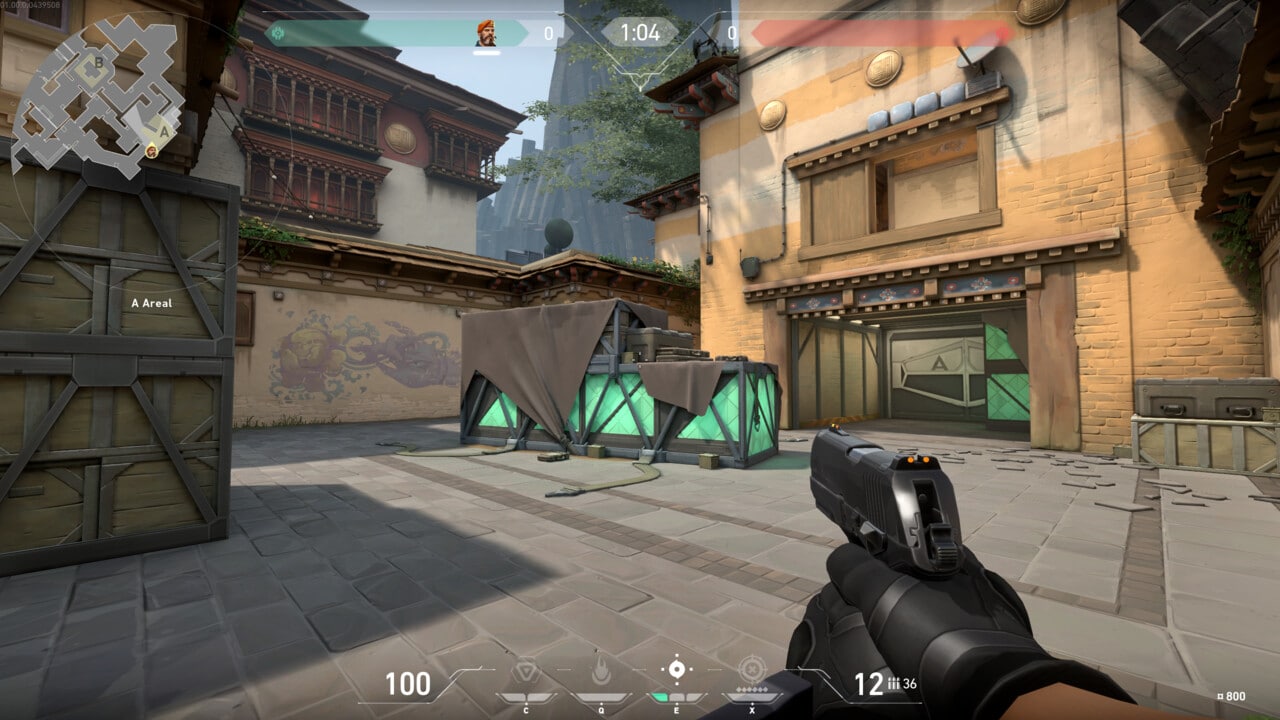Valorant in the technology test – ComputerBase
: Test |CUP | Specs |Config
tl;dr: Valorant is a new F2P game from the League of Legends developers. The graphics of the tactical first-person shooter are functional: Optical dreariness allows extremely high FPS on the current hardware. Three-digit values are possible even on old PCs or entry-level GPUs. The influence of the GPU architecture is interesting.
Update 06/05/2020 11:54 a.m.
League of Legends (LoL) by Riot Games from 2009 is still one of the most-played PC games in early 2020. Now the developers have finished their second work, which should again inspire the masses online, but could not have been more different.
Because Valorant is a tactical first-person shooter with hero elements and thus a mixture of Counter-Strike, Rainbow Six: Siege and Overwatch. However, the LoL recipe for success has remained the same: Valorant is also Free-2-Play and only makes low demands on the PC – it is basically available to everyone. The only annoying thing before the first game is the intrusive cheat protection that nests deep in the system and even requires a restart. In the following test, the editors clarify how low the requirements for the PC really are.
Valorant looks … functional
Valorant relies on the Unreal Engine 4, but dispenses with a low-level API – DirectX 11 is used. The graphics are in the comic style, but that cannot hide the fact that the optics are no more than functional. Valorant is not an ugly game, but regardless of whether it is character models, effects, textures, lighting, shadows, object density and so much more, the quality does not even come close to a title from 2020, even with the highest quality.
But that’s how it should be, because this is the only way to ensure that the multiplayer game runs on every “forest and meadow PC”. And as the benchmarks on the next page will show, the undertaking was a success. A current entry-level graphics card is also sufficient for three-digit frame rates of 1,920 × 1,080.
Overlays and limiters, but otherwise little convenience
The PC version of Valorant has adapted the graphics menu to the graphics quality. Only the bare essentials are offered, there is nothing more. The game does not even use graphics presets, which is quite surprising. Because especially for players with little experience, presets are much easier to understand than individual graphic options.
Valorant’s overlays
picture 1 from 4
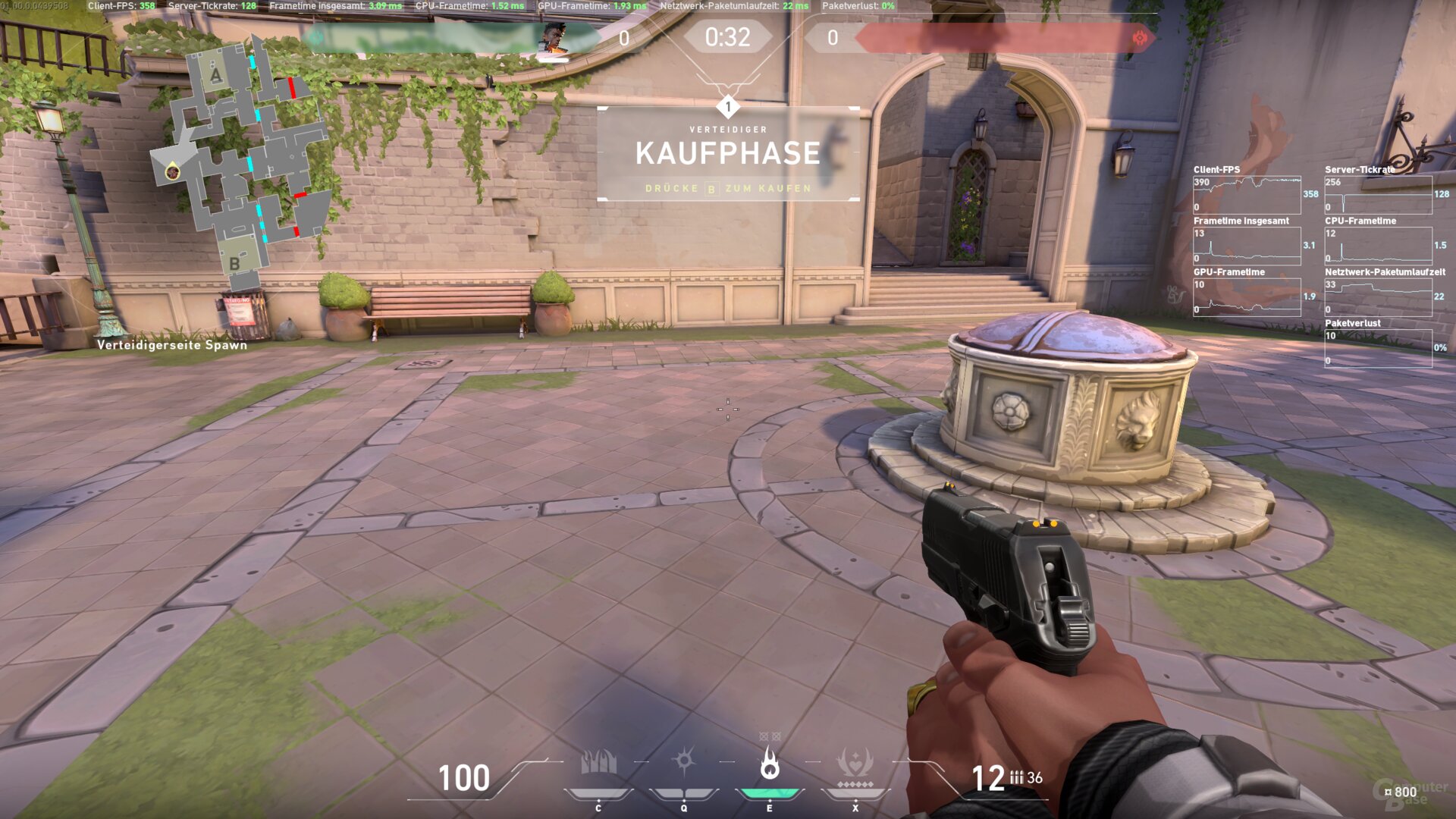
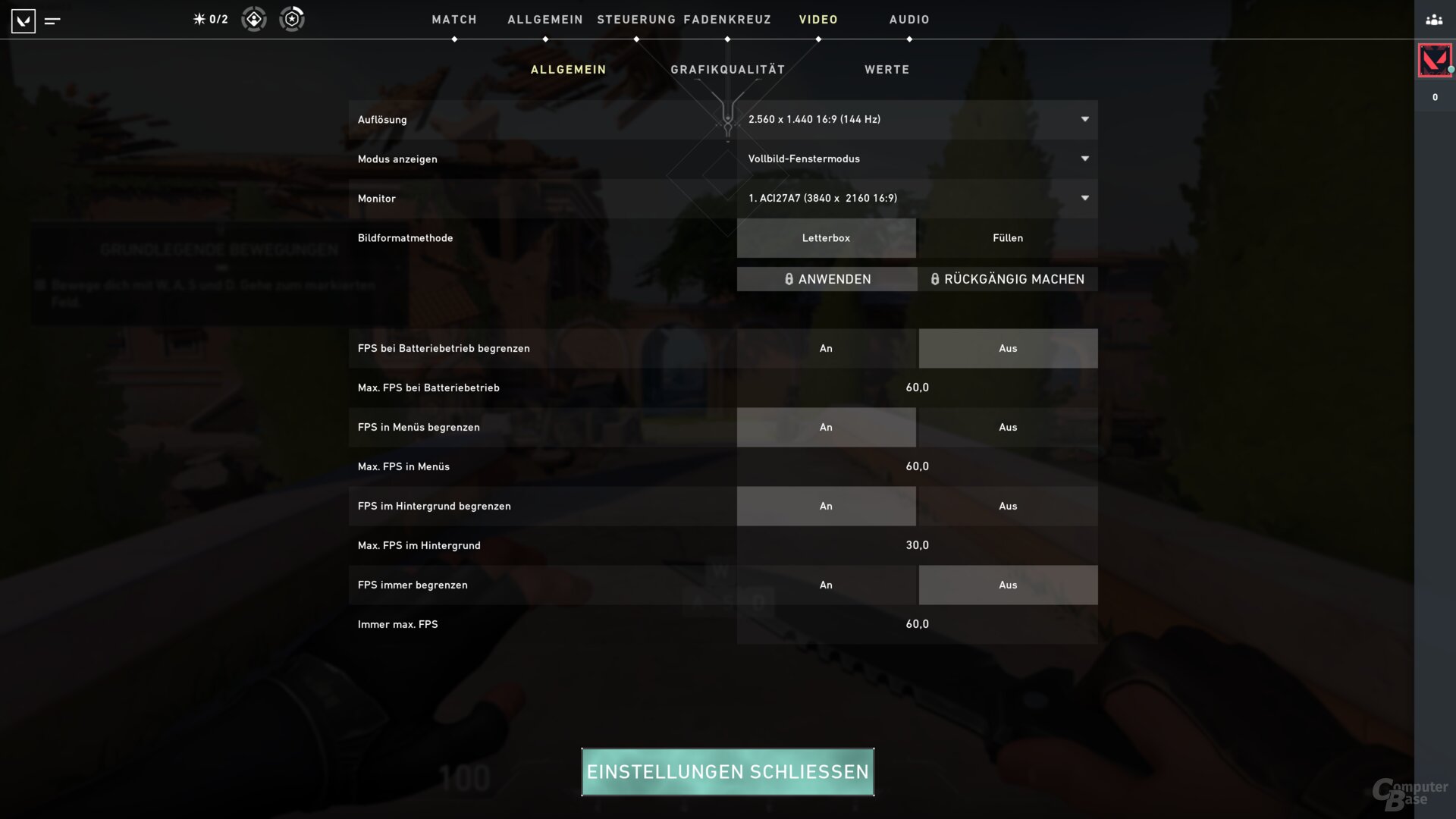
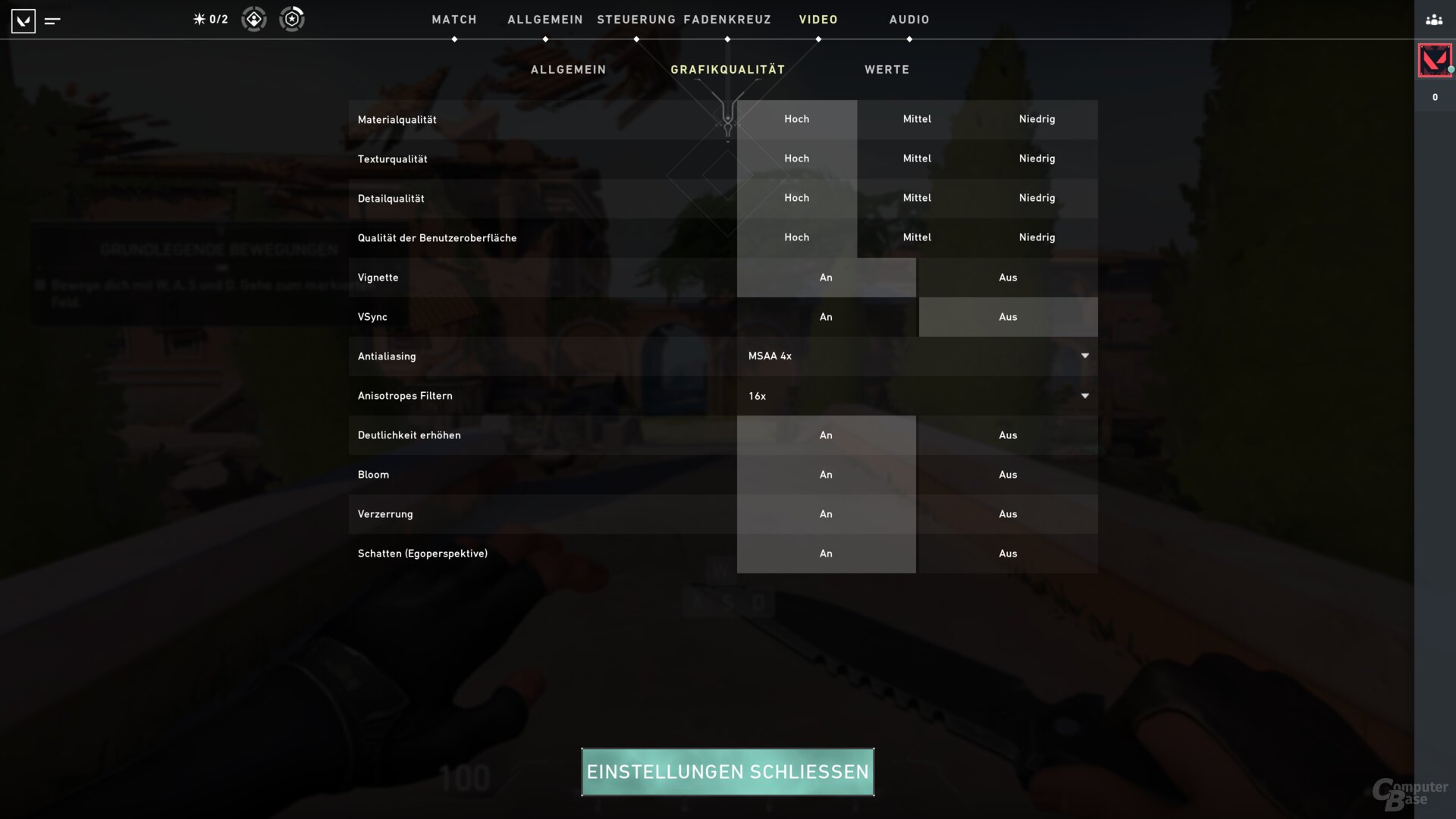
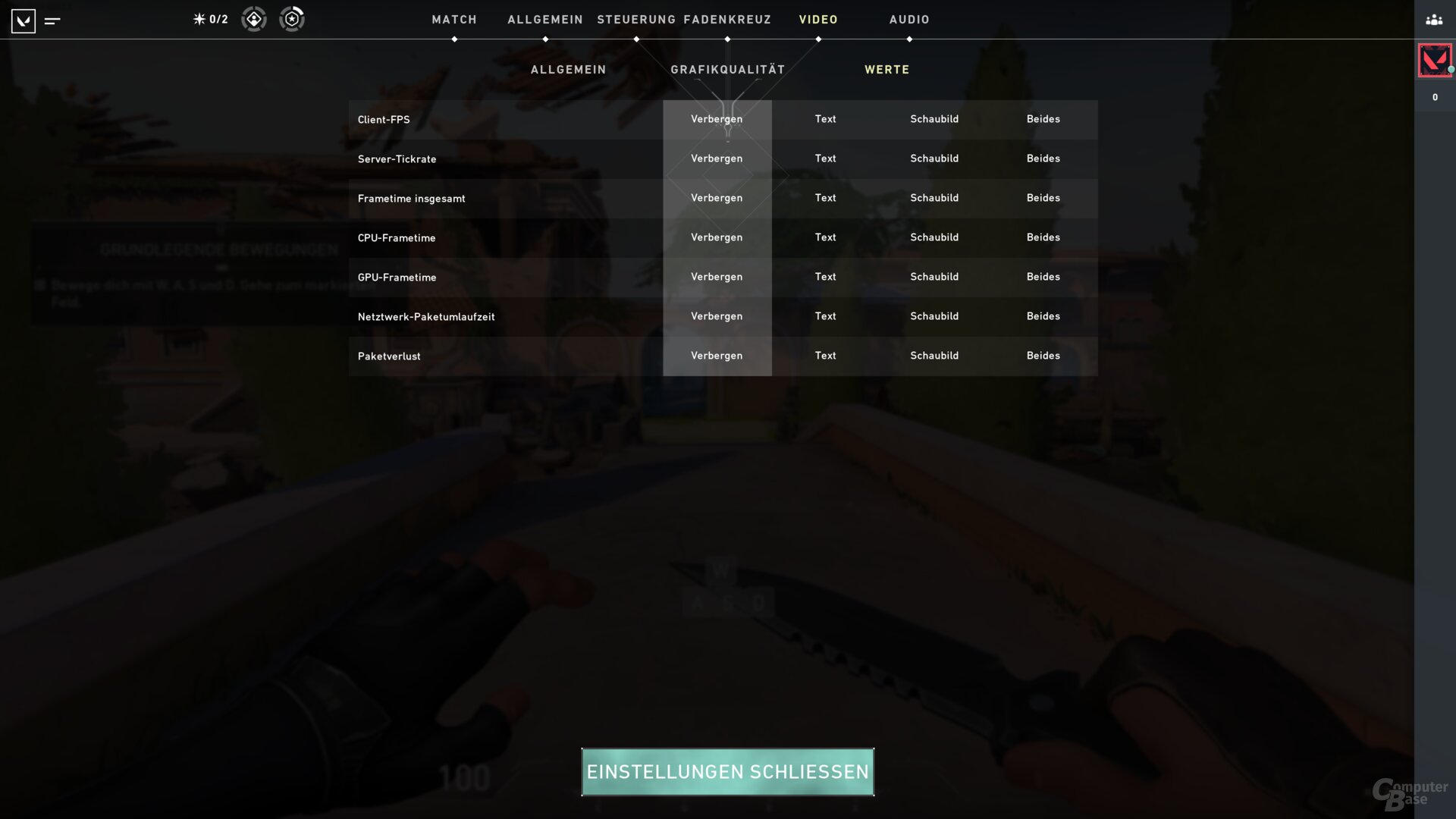
What the game has enough to offer are FPS limiters. There are separate limiters for the game itself, for battery operation on notebooks, for the menu and in the event that the game is in the background of the screen. The frame rate of the limiters can be freely configured.
In addition, the game offers overlays for the frame rate, the frame times, the ping, the packet loss and the server tick rate. These can be output either as a numerical value, as a progress diagram or in both representations.
There are no more options. Also no down- or up-sampling, no sharpness filter or explanatory sample screenshots.
No presets, but graphics options with a huge impact
Valorant does without graphic presets. Instead, there are individual options that allow either two or three settings. There are visual differences, but they are not too big. Primarily, the textures and the already low density of details continue to suffer.
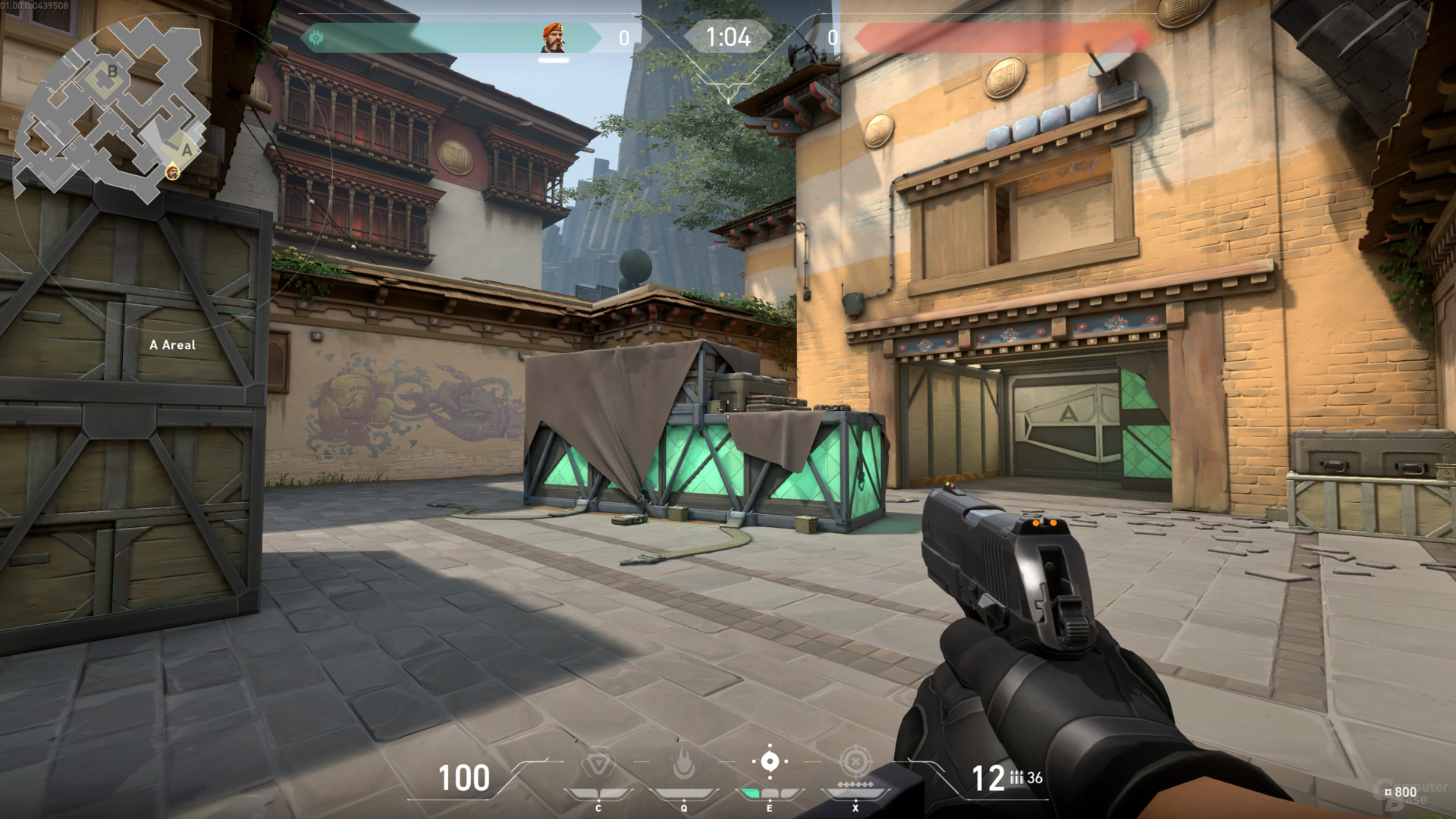
Valorant with the highest graphic details
picture 1 from 2

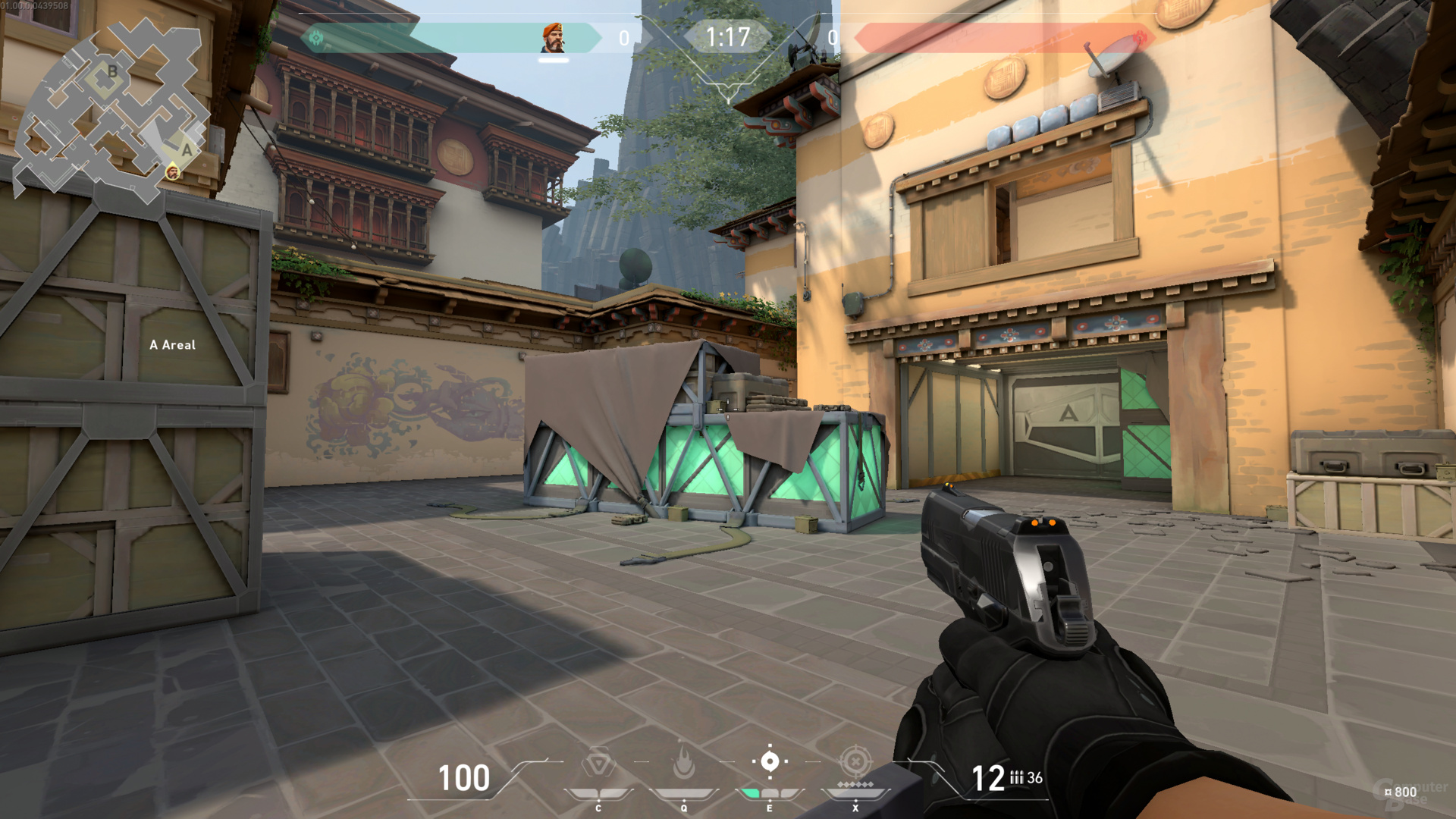
The impact on performance, on the other hand, is great. Especially when the game is at the GPU limit, the frame rate increases massively with reduced details. Then the speed can be more than doubled, sometimes even tripled.
Classic MSAA and resolution issues
Surprisingly, Valorant does not offer any post-processing anti-aliasing, but relies on classic multi-sampling anti-aliasing at levels 2 × and 4 ×. MSAA works well in Valorant. There is no blurring and all elements are covered by the anti-aliasing. The 4 × level is advisable because this visibly improves the image stability compared to 2 ×. Speaking of image calmness: Although this is not perfect in Valorant, the flickering is also limited in Full HD.
Anyone who wants to improve the image quality and the quietness of Valorant by downsampling in-house will be disappointed. Although higher resolutions are recognized on the test system, the full-screen mode no longer works correctly, so that the additional pixels are displayed outside the screen area. The game is not playable like this.
On the next page: GPU as well as CPU benchmarks, frame times and the conclusion





